Spiders are extremely common around the house. Although many people are afraid of spiders, these critters really shouldn’t be feared. Most indoor spiders have webs in a secluded corner and won’t bother you unless directly provoked. But they will catch mosquitoes and flies for you — it’s organic pest-control!
Most common household spider species are very flexible about what they eat and where they live, so they can survive in lots of different environments and continents. Here are some of the most common household species so you can try to identify your roommates.
The American house spider
The American house spider (Parasteatoda tepidariorum) is known as the house spider in the USA because it is the most common household spider species. These spiders are about 4/5 cm (1/4 inch) long. They are brown with some black or white spots on the abdomen. They produce distinctive egg sacks that are shaped like a teardrop with a papery brown exterior. House spiders will only bite humans when directly provoked. This species is found around the whole world and usually in or near man-made structures. House spiders build messy cobwebs in the corners of rooms and in sheds and barns. They mostly eat flies, mosquitoes, ants, and wasps.
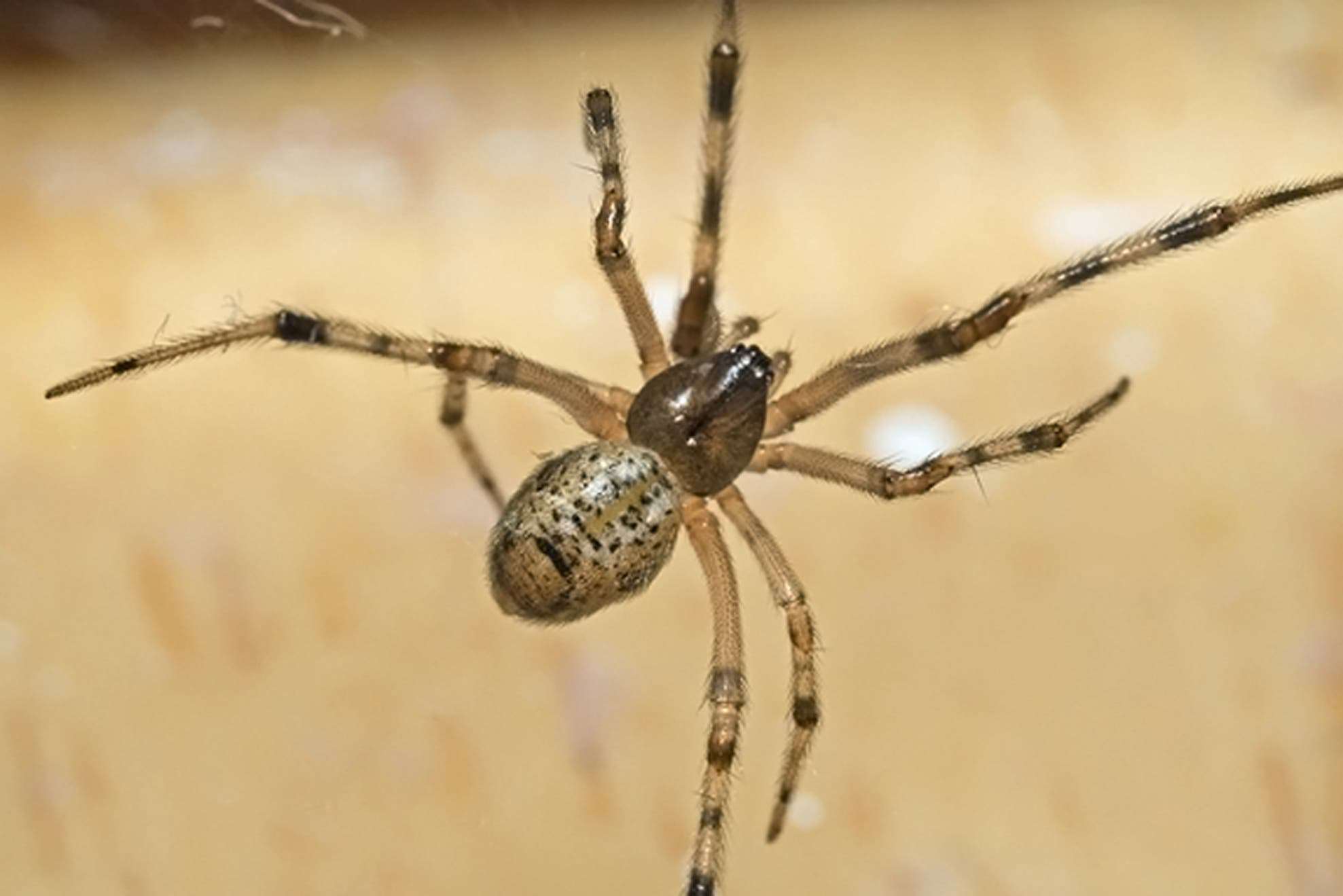
The domestic spider
The domestic spider (Tegenaria domestica) is also known as the house spider in Europe. Domestic spiders have mottled bodies, often with a chevron pattern on their abdomens. They make a messy funnel shaped web built around a flat surface, with the spider waiting at the bottom of the funnel. Small to mid-size insects are usually the prey of choice. Domestic spiders are not aggressive and will often back off to their web when confronted. If the web is attacked, the spiders will flee or huddle in a ball. Males are known to get stuck in bathtubs and sinks at night. Domestic spiders are not known to bite often, but even if they do it is painless. These spider has also spread everywhere through human transport; they are found across Europe, North America, and parts of Western Asia.
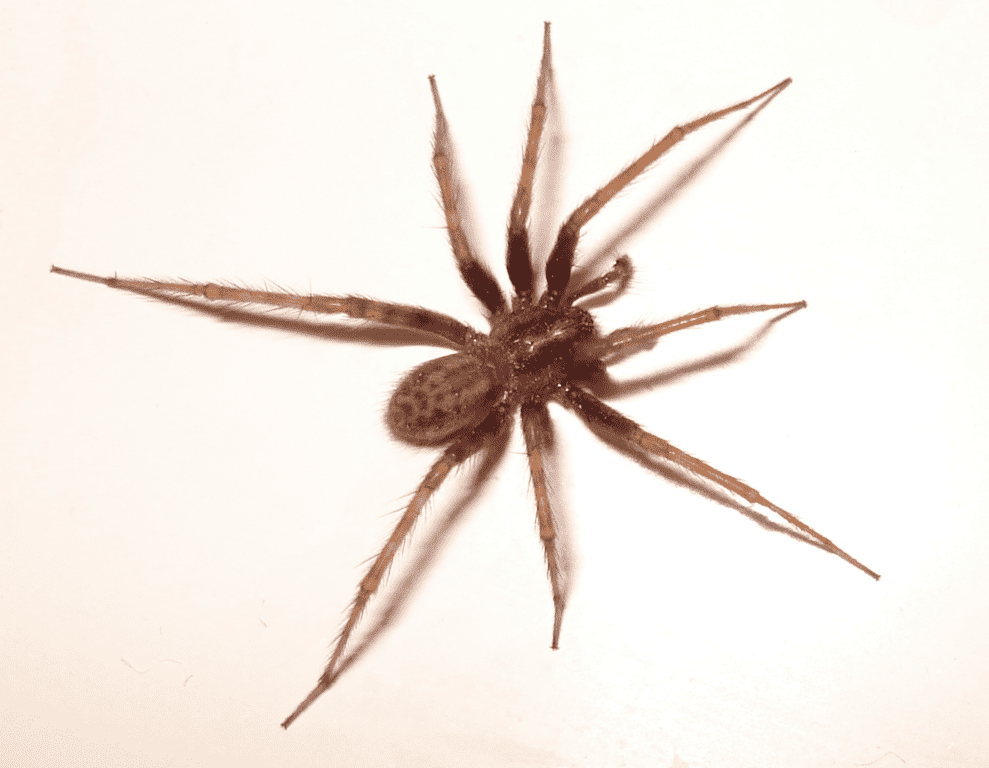
The cellar spider
Cellar spiders (in the Pholcidae family), are often confused with daddy longlegs the Opiliones (read explanation here) due to their long thin legs. However, cellar spiders have 6-8 eyes and two distinct body segments. They are often found in dark, isolated places as basements, attics, and cellars. In the wild, they build webs under logs and in caves. They set up in a corner and build a messy 3-D web. The threads in the web are not sticky, but when something flies into it they vibrate and the spider appears quickly to grab and wrap its prey in silk. Cellar spiders eat insects, arachnids, and other small vertebrates; they are especially fond of ants. These spiders can survive months without eating.
They are also found on every continent except Antarctica, from deserts to tropical forests. In particular, the species Pholcus phalangioides likes living in houses and has been spread around the world through human movement. All of the species are harmless; they don’t bite often and are not known to cause any harm to humans.
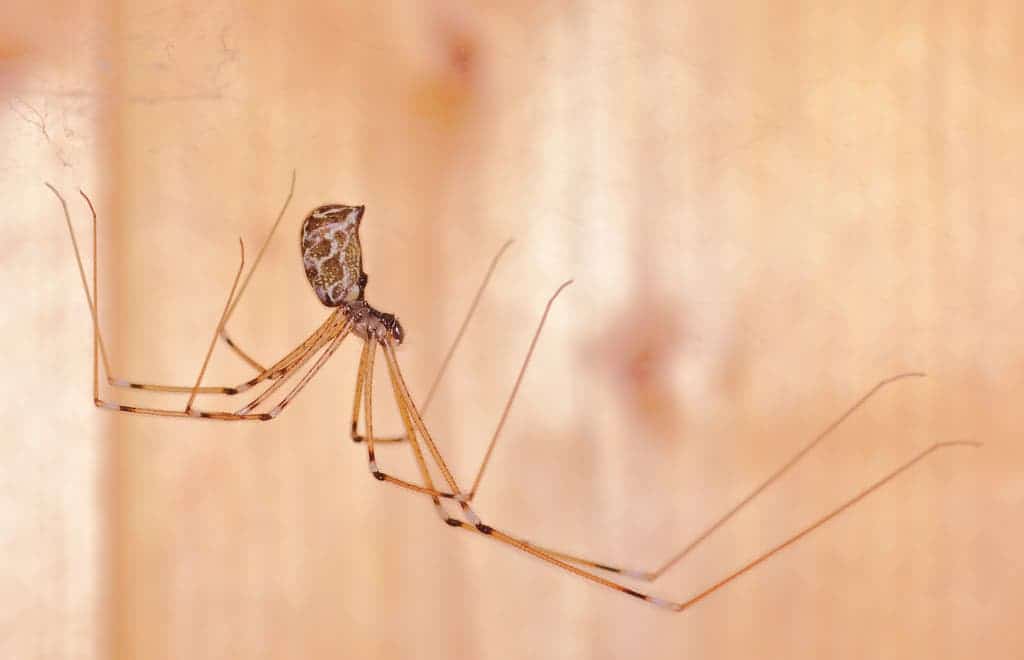
Daddy longlegs
A special mention on this list is are daddy longlegs, also known as harvestmen. They are actually not spiders; they are arachnids more closely related to scorpions than to spiders. Daddy longlegs belong to the Opilione order. They have a compact oval body (no distinct segments), two eyes, and eight thin long legs. They don’t have any venom glands so they are completely harmless. Daddy longlegs are common around the house and outside. Opiliones scavenge food to eat, including dead insects or food waste, and prey on everything from aphids to spiders. They are found on every continent except Antarctica, and can live in many different types of habitats such as forests, meadows, caves, and wetlands.
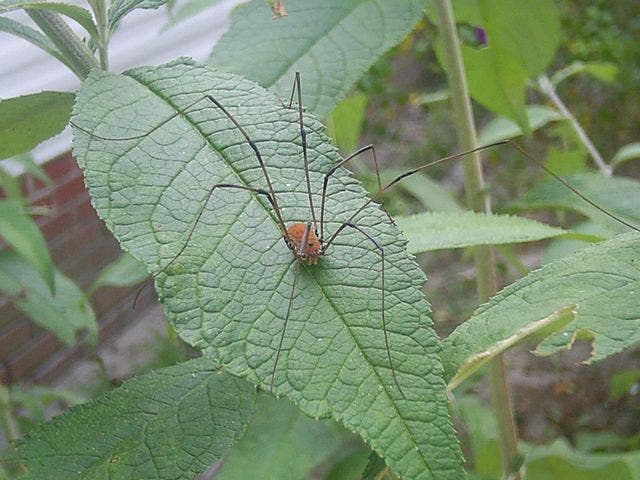
Black widows
Black widows (Lactrodecus genus) are considered the most venomous spiders in North America, but they only bite when disturbed. Most victims aren’t in serious danger — death by black widow is extremely rare; very old, young, and sick victims are the most at risk. Female black widows are a shiny black color with a distinctive red hourglass shape on the underside of the abdomen. Males are a dark grey or brown color; they sometimes have red or pink spots on their backs. The female spider’s poison is 3 times stronger than that of the males; it’s lucky that the females are very easy to recognize!
Black widows occupy dark dry shelters in trash, garages, basements, and sheds. They are found in temperate regions throughout the world, in North and South America, Southern Europe and Asia, Australia, and Africa. They eat flies, grasshoppers, mosquitoes, beetles, and caterpillars. The spiders wrap their prey in silk and insert digestive enzymes into the package to enjoy a liquid lunch.
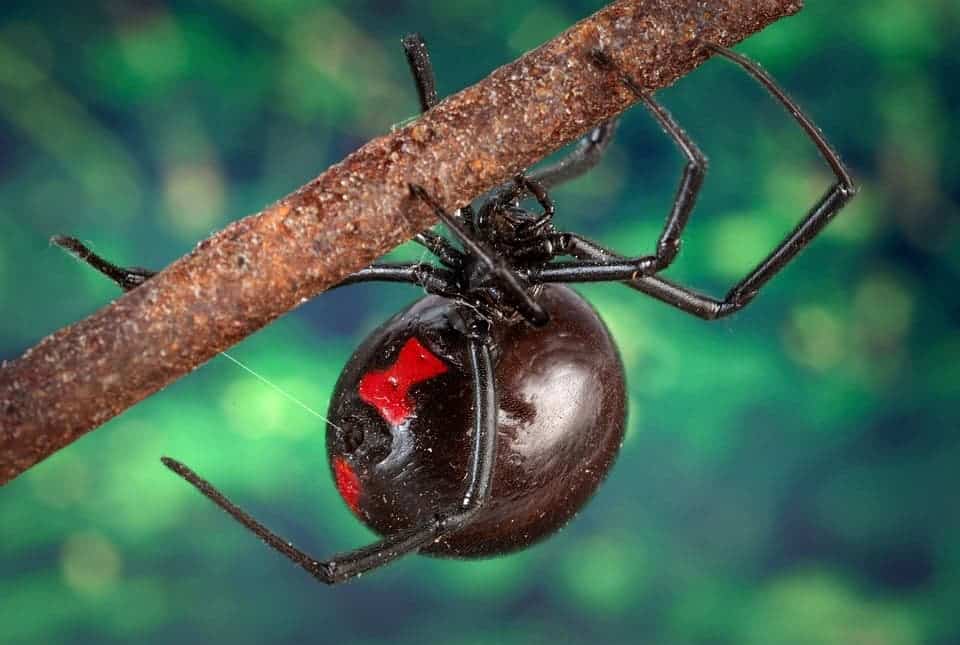
Jumping Spiders
Jumping spiders (Salticidae family) are mostly found outdoors but can also find their way under furniture, below doors, between shelved books, and in the folds of fabrics. They are recognizable by their square-shaped heads, compact body, and two very large eyes (plus 6 smaller ones). They have the best vision of any spider; these little spiders can see up to 20 cm (8 inches) away! Jumping spiders are named as such because they can jump many times their body length to catch prey; they are active hunters. They eat insects, arthropods, and even nectar. One species in Africa specifically targets mosquitoes that transmit malaria parasites, helping in malaria prevention. They do not build webs and instead use silk to communicate and build “pup tents” where they shelter and overwinter. Their bites are harmless unless you’re specifically allergic.
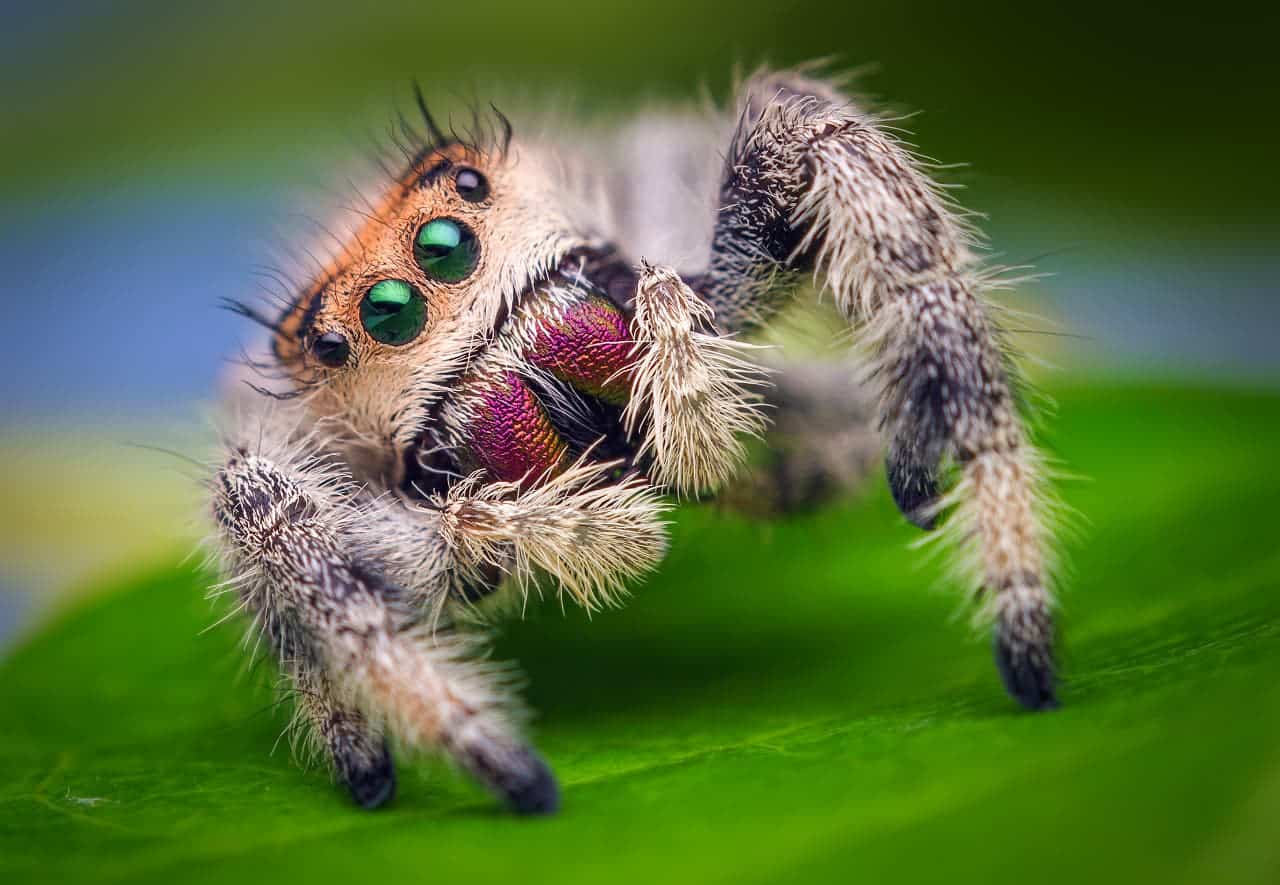
There you have it— the most common house spiders in the world!


